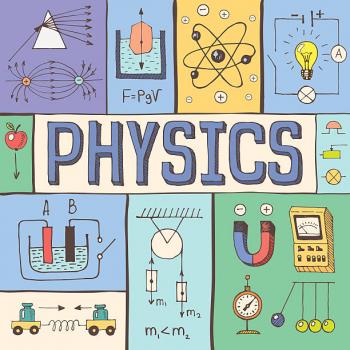Who are the Most Important Inventors in Physics? 5 of the Greatest Physicists in History

Physics is one of the most important and oldest sciences concerned with studying objects and the phenomena surrounding them.
Many inventors have contributed to developing this field and making important scientific discoveries.
In this article, we will review the five most prominent physicists in history who influenced the field of physics with their great contributions, so that we can learn more about what they contributed to this science.
1- Einstein
- Albert Einstein was a renowned theoretical physicist who is best known for developing the theory of relativity, which revolutionized modern physics.
- Born in Germany in 1879, Einstein made numerous significant contributions to physics during his lifetime.
Some of his notable inventions and discoveries include:
- Special Theory of Relativity: In 1905, Einstein introduced the theory of special relativity, which proposed that the laws of physics are the same for all observers, regardless of their relative motion. This theory links space and time, and it famously includes the equation E=mc², which describes the equivalence of energy (E) and mass (m).
- General Theory of Relativity: In 1915, Einstein expanded on his theory of relativity with the general theory of relativity. This theory describes gravity as the curvature of spacetime caused by mass and energy. It explained the phenomenon of gravity more comprehensively and accurately than ever before.
- Photoelectric Effect: In 1905, Einstein formulated the theory of the photoelectric effect, which explained the behavior of light when it interacts with matter. This work demonstrated that light could behave as both a particle (photon) and a wave, and earned Einstein the Nobel Prize in Physics in 1921.
- Brownian Motion: In 1905, Einstein used statistical mechanics to explain Brownian motion, the random movement of particles suspended in a fluid. His explanation provided evidence for the existence of molecules and confirmed the atomic theory.
- Theoretical Foundations of Quantum Mechanics: Einstein contributed to the development of quantum theory, particularly with his research on the nature of light and the concept of quantization. However, he also had reservations about some aspects of quantum mechanics and famously engaged in debates with other physicists.
_11zo1707469932.jpg)
Read more: The 10 Most Famous Artists in the World: A Trip Through the History of Art
2- Newton
- Sir Isaac Newton was an English mathematician, physicist, and astronomer who lived from 1643 to 1727.
- He is widely regarded as one of the most influential scientists in history and is best known for his three laws of motion and his law of universal gravitation.
- In addition to his laws of motion, Newton made significant contributions to optics, developing the theory of color and the first reflecting telescope.
- He also conducted experiments on the nature of light, demonstrating that white light is composed of a spectrum of colors.
Newton's laws of motion outline the fundamental principles governing motion. They are:
- The Law of Inertia: An object at rest will remain at rest, and an object in motion will continue at a constant velocity unless acted upon by an external force.
- The Law of Acceleration: The rate of change of motion of an object is directly proportional to the force acting on it, and inversely proportional to its mass.
- The Law of Action-Reaction: For every action, there is an equal and opposite reaction.
3- Fresnel
- Augustin-Jean Fresnel was a French physicist and engineer, born on May 10, 1788, and died on July 14, 1827.
- He made significant contributions to optics and is best known for the invention of the Fresnel lens, which revolutionized lighthouse illumination.
Fresnel's inventions and contributions in the field of physics include:
- Fresnel Lens: He developed the Fresnel lens in 1822, a compact and lightweight lens composed of concentric prisms that focus light more efficiently than traditional lenses. Fresnel lenses were used extensively in lighthouses as they could produce a concentrated beam of light capable of reaching long distances.
- Wave Theory of Light: Fresnel's greatest achievement was his explanation of the wave nature of light, which was in contrast to the competing particle theory proposed by Isaac Newton. He developed a mathematical formalism known as the Huygens–Fresnel principle to describe the behavior of light waves, explaining various optical phenomena.
- Fresnel Diffraction: He formulated a diffraction theory to explain the bending of light waves around obstacles and edges. This phenomenon is known as Fresnel diffraction and remains a fundamental concept in the study of wave optics.
- Polarization of Light: Fresnel made significant advancements in understanding the polarization of light. He discovered that light waves could be split into two perpendicular polarizations by certain materials, a phenomenon called birefringence.
- Interference: He studied the interference of light waves and developed mathematical models to explain constructive and destructive interference patterns. His work laid the foundation for understanding interference and played a crucial role in the development of modern physics.
4- Thomas Edison
- Thomas Edison was an American inventor and businessman who is best known for his numerous inventions in various fields.
- Although primarily known for his contributions to electrical engineering, many of his inventions had implications in the field of physics.
Some of his notable inventions and contributions include:
- Phonograph: In 1877, Edison invented the phonograph, a device used for recording and reproducing sound. This invention had implications in physics as it incorporated concepts of sound wave propagation and vibration
- Carbon microphone: Edison improved the design of the carbon microphone, an early device used for converting sound waves into electrical variations. His improvements included the use of carbon materials, which helped in amplifying the recorded sounds.
- Electric Lightbulb: Although Edison did not invent the electric lightbulb itself, he made significant improvements in its design. He developed a practical incandescent lightbulb in 1879, which used a filament that could produce light for a lengthy period.
- Motion Picture Camera: Edison also developed the first practical motion picture camera, called the Kinetograph, in 1891. This invention involved advancements in optics and the physics of capturing and projecting moving images.
- Fluoroscope: Edison's fluoroscope invention allowed for the visualization of internal body structures using X-rays. He contributed to the field of radiology by designing improved fluoroscopes, which involved understanding the physics of X-ray production and their interaction with the human body.

Read more: 10 of the Most Important Musicians in History
5- Faraday
- Michael Faraday was an English scientist and physicist who lived from 1791 to 1867.
- He made significant contributions to the field of electromagnetism and is known for his numerous inventions and discoveries.
Some of his major inventions in the field of physics include:
- Electromagnetic induction: Faraday formulated the laws of electromagnetic induction, which describe how a changing magnetic field induces an electric current in a conductor. This discovery laid the foundation for modern electric power generation and electric transformers.
- Electrolysis: Faraday conducted pioneering work in electrochemistry and discovered the fundamental laws governing electrolysis. His laws of electrolysis explain the quantitative relationship between the amount of chemicals involved and the amount of electricity used.
- Faraday cage: He invented the Faraday cage, a metal enclosure that shields objects from external electric fields by distributing the electric charges across its surface. Faraday cages are widely used in various applications, from protecting sensitive electronic devices to preventing electrostatic discharges.
- Faraday's laws of electrolysis: Faraday's two laws of electrolysis describe the quantitative relationships between the amount of material released or deposited during electrolysis and the amount of electricity passed through the solution.
- Faraday constant: He determined the Faraday constant, which is the charge of a mole of electrons and is used in many calculations in electrochemistry.
Read more: The 6 Most Influential Philosophers Throughout History
To Sum Up
The field of physics owes a great debt of gratitude to the brilliant minds and unwavering dedication of these five legendary inventors. From Isaac Newton to Albert Einstein, their groundbreaking discoveries continue to shape our understanding of the universe and pave the way for future scientific advancements.
Each of these physicists pushed the boundaries of knowledge, challenging conventional wisdom and revolutionizing their respective fields. Their contributions to physics have had a profound impact on our everyday lives, from the technology we rely on to the fundamental principles that govern our world.
Visit Schoolizer to learn more about active learning strategies and more to become the best teacher for your students.






